Appalachia Local Lab
Using Design Jams to explore a circular economy and its buildout in Appalachia
Mechanism hosts Design Jams to encourage conversation and connection around local production ecosystems. For the ReUse Design Jam event series, Mechanism brought in the ReUse Corridor (Coalfield Development), American Sustainable Business Network, and Reimagine Appalachia to co-create a series of Appalachian Reuse-focused Design Jams to foster space to discuss challenges, opportunities, and planning for circular economy expansion in the region.
After nine months of planning, one in-person and two virtual ReUse Jams were a unique and rare moment when folks from different backgrounds, professions, perspectives, and geographic areas came together for one interest: to explore a circular economy and its buildout in Appalachia. The audience was made up of people who knew a lot about and work within systems of a circular economy, and others who knew very little to nothing, creating a truly diverse space where multiple perspectives could contribute to what growth can look like in the region and beyond.
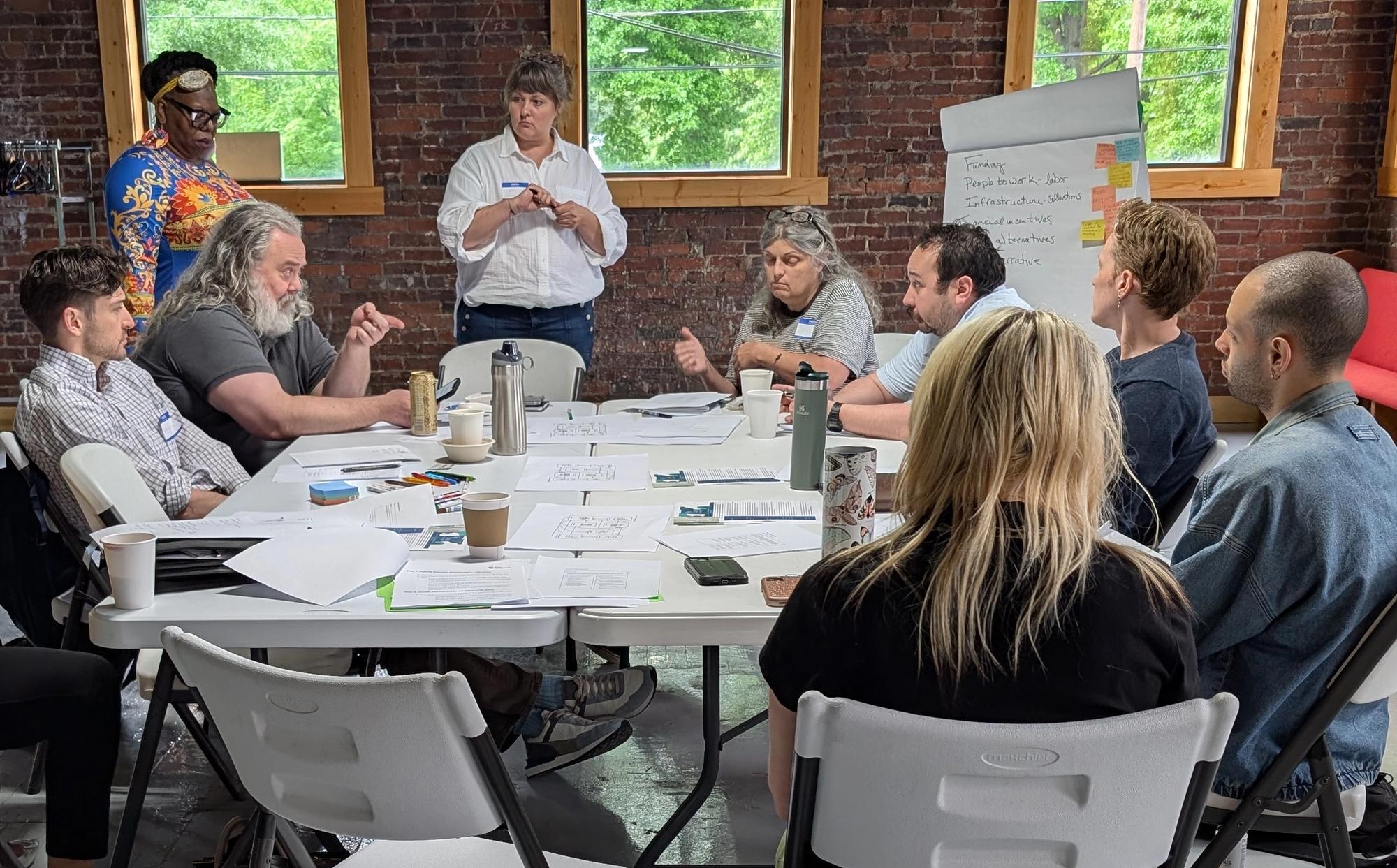
About
About Mechanism’s Design Jams
The National Endowment for the Arts, in their Valuing the Art of Industrial Design report,1 identified that small- and medium-sized manufacturers (SMM) are generally unfamiliar with industrial design’s value, but the few manufacturers that do partner with industrial designers see revenues increase and costs diminish. Mechanism’s State of Urban Manufacturing research illustrated an interest from designers, makers, and small-batch manufacturers to connect to SMMs in their regions, but barriers to connecting limit potential business development.
Together, these two reports highlight the importance of helping designers and manufacturers connect to one another: Increased awareness of product design, creative entrepreneurship, and manufacturing builds connections across communities and sectors, which in turn leads to more economic activity and helps build a stronger, resilient local manufacturing ecosystem.
Mechanism’s Design Jam events do just that. Design Jams are interactive events that bring together designers, manufacturers, and community members, inviting them to explore new designs for services, systems, strategies, and products based on local community needs, resources, and production techniques. Together, participants solve problems members in their communities face, all while inspiring greater collaboration within place-based manufacturing ecosystems and creating new supply-chain connections.
Jams establish a strategy for connecting all parts of a manufacturing ecosystem—including designers, makers, manufacturers, and community and economic developers—thus opening up new innovations and relationships. The Design Jam intentionally goes beyond a simple introduction to unite groups who don’t naturally work together—and who have preconceived notions of how the other operates—and offers a collaborative and supportive environment. Mechanism’s intention is to foster the change necessary to bring disparate but reliant communities together, and it starts with getting disconnected people to spend more time talking to one another.
These events, at their core, are about building community and bringing unlikely partners together. This includes manufacturers interfacing with designers; communities leaders with industry leaders; policy makers with pro-active citizens – and everyone in between. At Mechanism, we work to harness moments like these by connecting communities, businesses, and individuals to each other, all toward the goal of creating momentum for local, sustainable, equitable manufacturing.
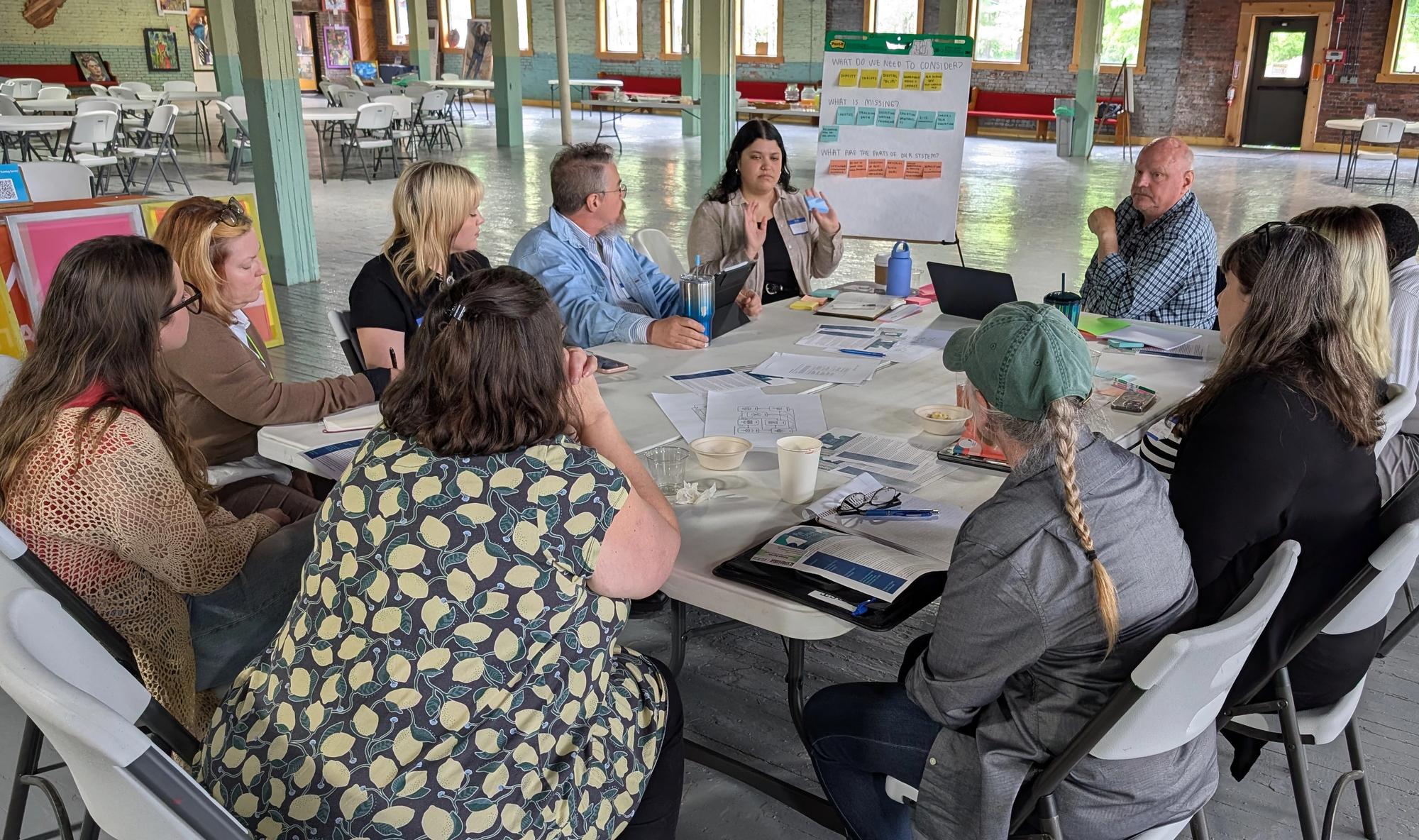
Background
Manufacturing has been a significant economic driver in the United States for decades and Appalachia played a key historic role in driving growth. Yet with decline in operations, today the region faces low job opportunities and economic hardship. As resources continue to be strained and supply chains disrupted, there is increased viability in diverting waste streams into new projects, services, and inputs.
Conversations around sustainable waste management and circular economy systems are not commonplace in Appalachia, so creating an environment that promotes learning, collaboration, and collective dreaming is crucial to the integrity of waste management, economic development, and quality of life in the region.
The world, nation, and Appalachia need a true hands-on just transition as we have watched industries and jobs leave our towns, cities, and communities, and many are eager for more opportunities and options. There are so many valuable materials and resources that are disposed of and landfilled in our region, but these discarded materials still have value and can provide new job and business opportunities.
Goals & Objectives
The goal of the ReUse Jams was to get people to dream big, and not get hung up on challenges or all the things that may be wrong or need fixing. Instead, we wanted to show how to use those instances to inspire informed solutions and to co-create and imagine new systems where we live and work and how they can look if they are more circular and creative. Many participants that attended one or more of the Jams remarked that it restored hope for them or reinvigorated their inspiration in the field.
Many Appalachians are used to hardship and challenges, and are not as often encouraged to dream, hope, and wish for better. They get used to all the things that need to be “fixed” or changed first. Attendees of the Jams were able to come to a shared understanding of a circular economy, its current state, and the need for circular service and system expansion in Appalachia. Then they had the rest of their time to collaborate and work together on real world challenges and to dream up possibilities and opportunities for creativity, accessibility, and economic and workforce growth that could be possible through a circular economy.
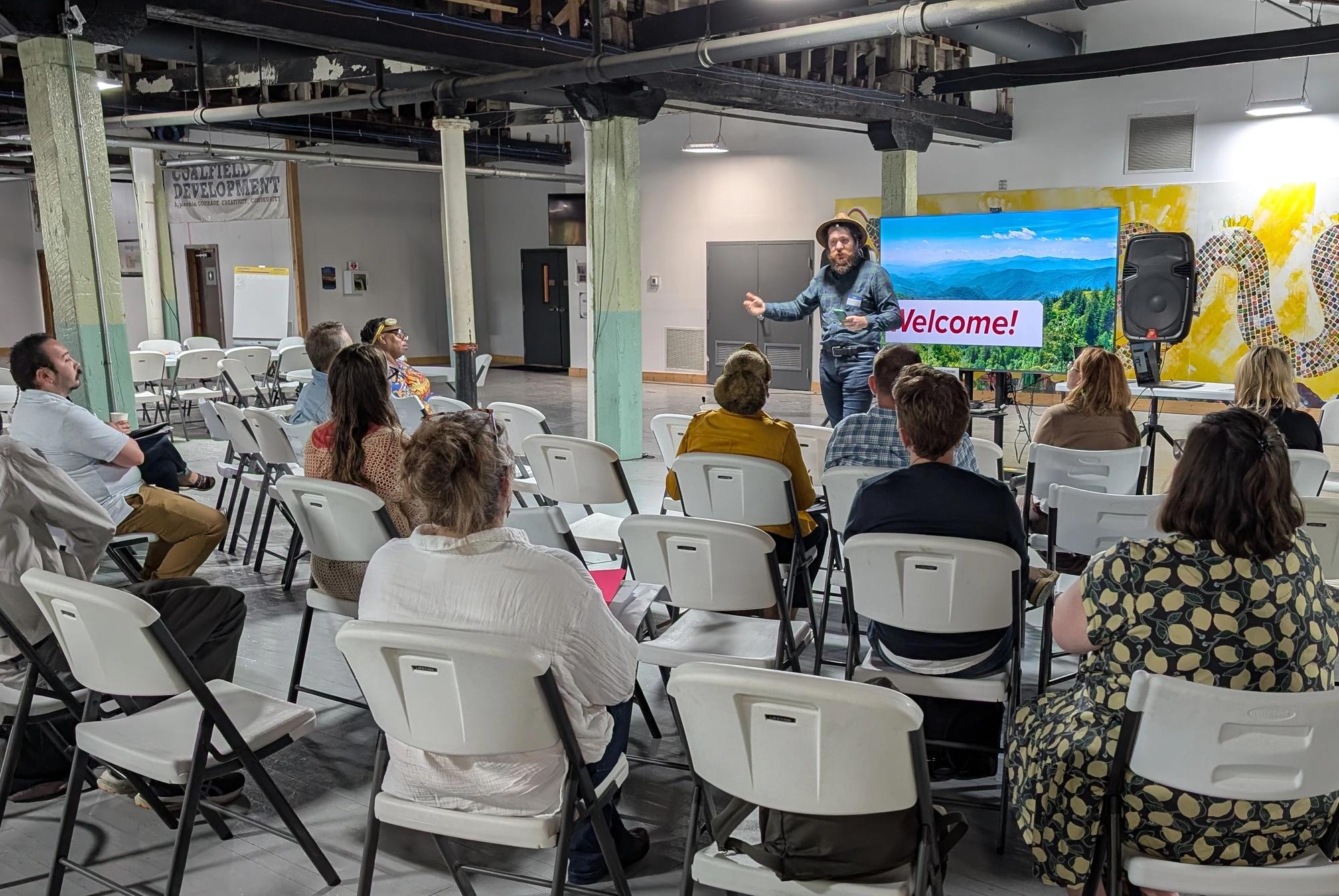
Meet the Participants
Event series partners in co-creating and running the events:
Baleigh Epperly, Associate Director of Appalachian Reuse Hub | Coalfield Development
Amanda Woodrum, Co-Director | ReImagine Appalachia
Sionainn Rudek, Program Associate | ReImagine Appalachia
Louis Tierno, Director | Pennsylvania and Appalachia Sustainable Business Networks
Special thanks to:
Leslie Montgomery, Lorrine Rue, Mary Kahle, Nicole Dias, Kristen Ahern, Mark Swiger, and Amy White for being team facilitators.
Crystal Good, Natalia Rudiak, and Jacob Hannah for being emcees at our events.
Steve Deasy for providing expertise in circularity and relationships building.
Molly Updegrove and Liam Gerrity from ReImagine Appalachia for their technical expertise during the virtual events.
Activities & Achievements
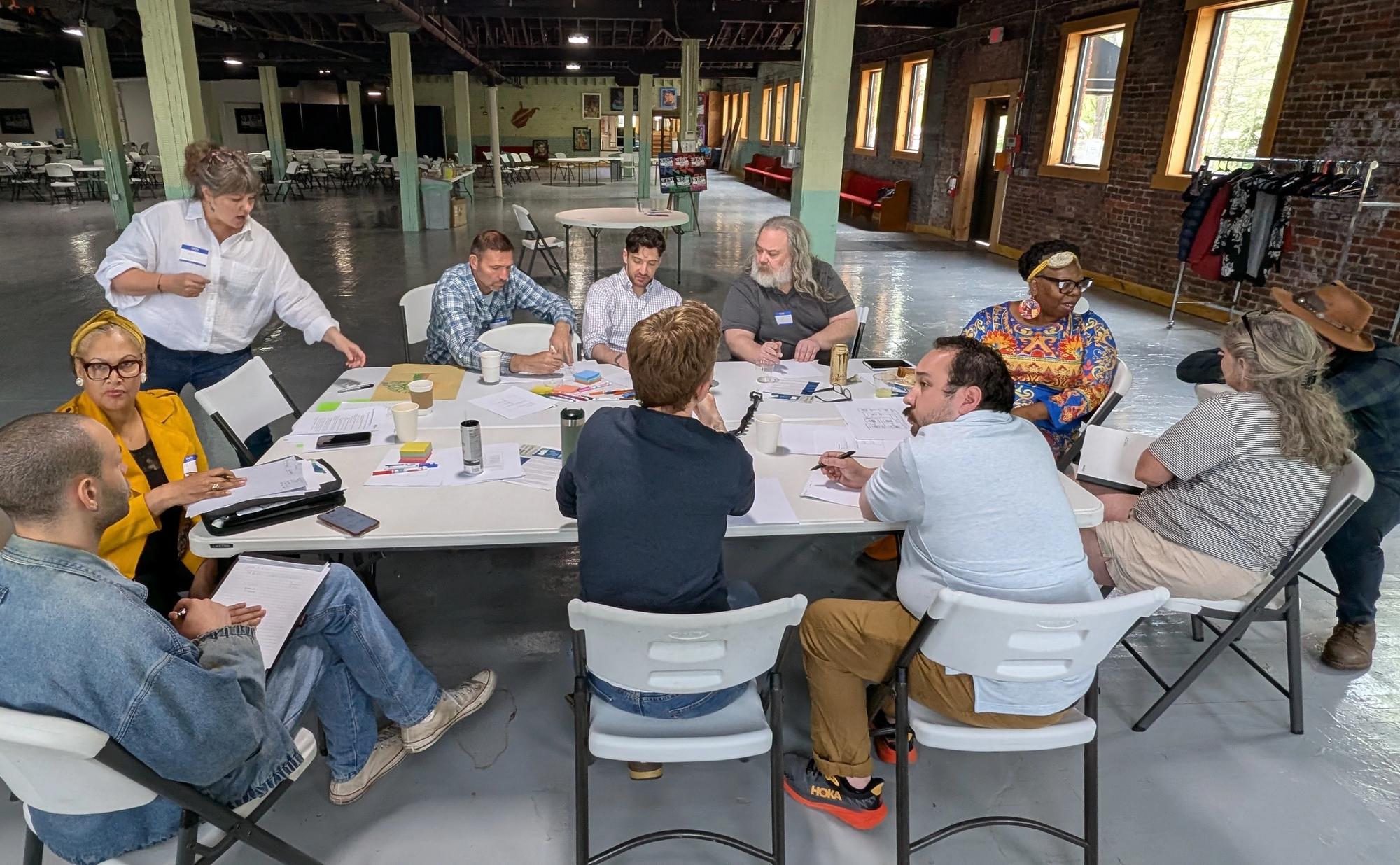
Participants were asked to discuss an array of challenges and generate solutions and new ideas for topics relating to circularity from transportation, logistics, geography, electronic waste, funding, creative reuse, construction and deconstruction, and much more. This conversation was so important to have at a community level, with as many different types of workers and community members joined together as possible because people know their own community best. There is no investor or business that can do a better job than workers and residents at knowing what challenges exist to sustainable waste management in communities across Appalachia, and what ideas should be prioritized and resourced.
The first two ReUse Design Jams were virtual, allowing for more accessibility for folks from across the region to join the conversation and collaborate with others in breakout rooms on the topics of collection and sorting in the first Jam, and repair, redistribution, and reuse in the second.
At the in-person ReUse Jam in Huntington, West Virginia, the focus of the day was building out circular systems and services. Participants met at West Edge factory, and sat together under the largest non-profit solar array in the state of West Virginia, spending the day learning, getting to know each other, and brainstorming scenarios to pilot and expand circular initiatives in the region. It was inspiring to see people take a whole day away from their lives and work to eagerly join others in conversations about challenges in sustainable waste management and designing of new models and initiatives to increase job opportunities in the field.
Mechanism’s Design Jam structure is intentionally built to promote collaboration, where everyone contributes and has a say in ideas and plans being generated. Many participants remarked that they had never engaged in any kind of event like the ReUse Jams, and some were very eager to see what would happen next with the thoughts and ideas that they contributed to the specific topics and prompts.
More about our two Virtual Jams
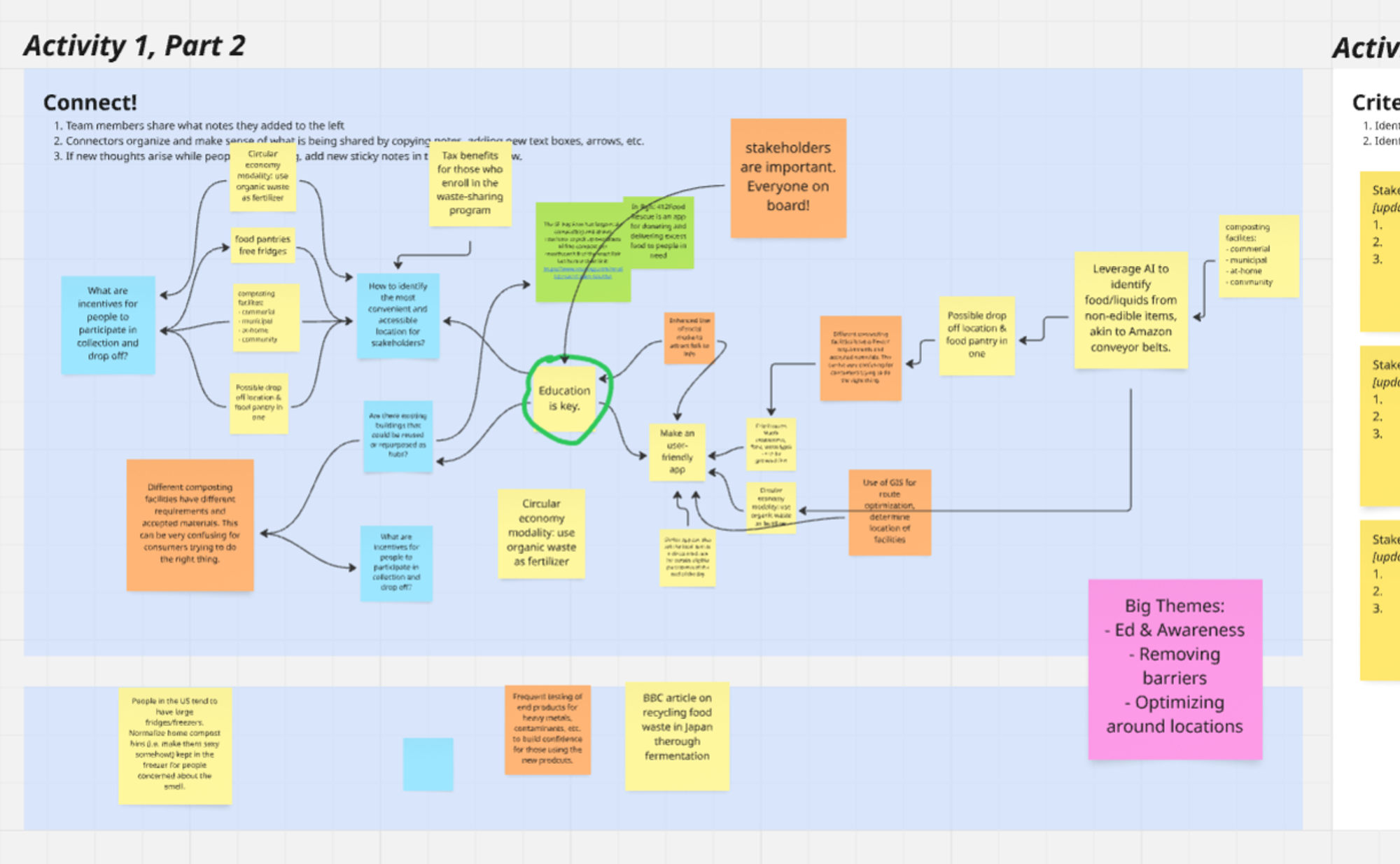
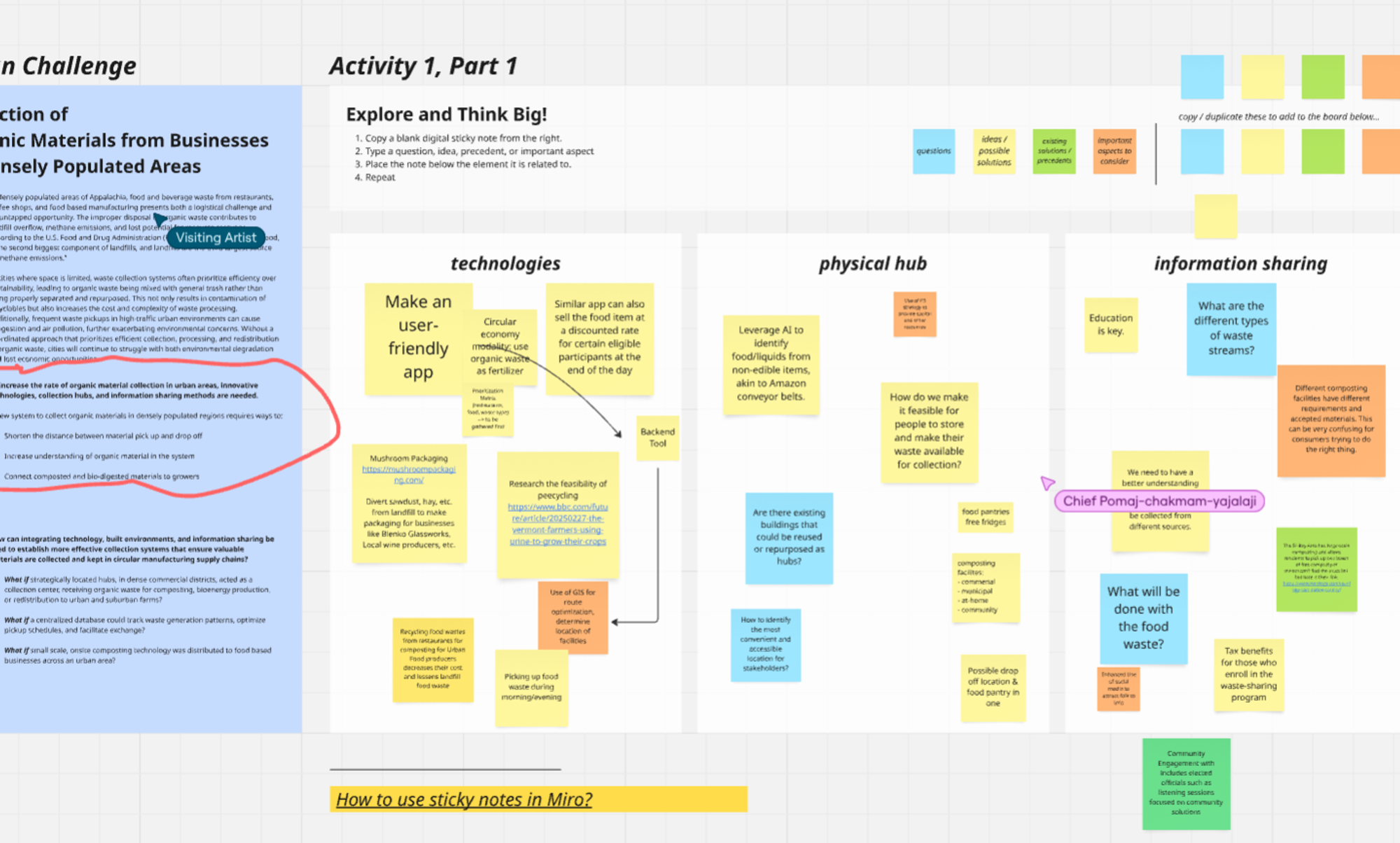
Both Virtual ReUse Design Jams were open to everyone, in and outside of Appalachia, across all parts of the manufacturing ecosystem. During the Virtual Jams, teams focused on generating new strategies and services for collecting, sorting, reusing, and redistributing materials within manufacturing ecosystems in Appalachia. At the start of each event, participants were assigned to a team, not knowing who they would be working with, and given a project brief, which was also new to them.
Each team worked collaboratively and quickly (in under two hours), responding to industry and community challenges and exploring ways to build new resources to support the region’s citizens, communities, and businesses. Teams used online collaboration tools, Zoom and Miro, to respond to challenges and develop their concepts. The following proposal snapshots bring together the ideas for the new businesses and services they envisioned.
Solutions for Collecting
Solutions for Sorting
Solutions for Reuse
Solutions for Redistribution
More about our In-person Jam
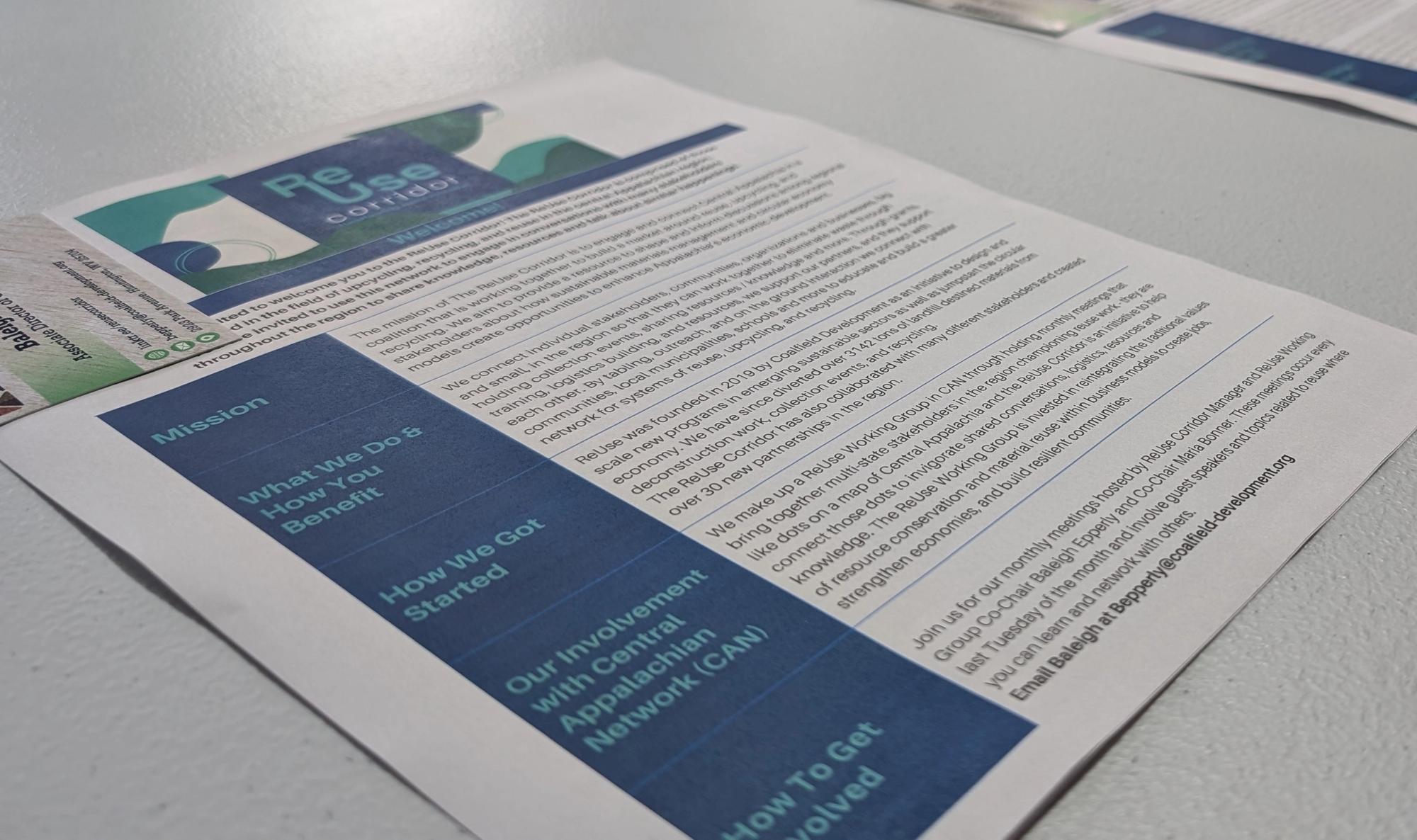
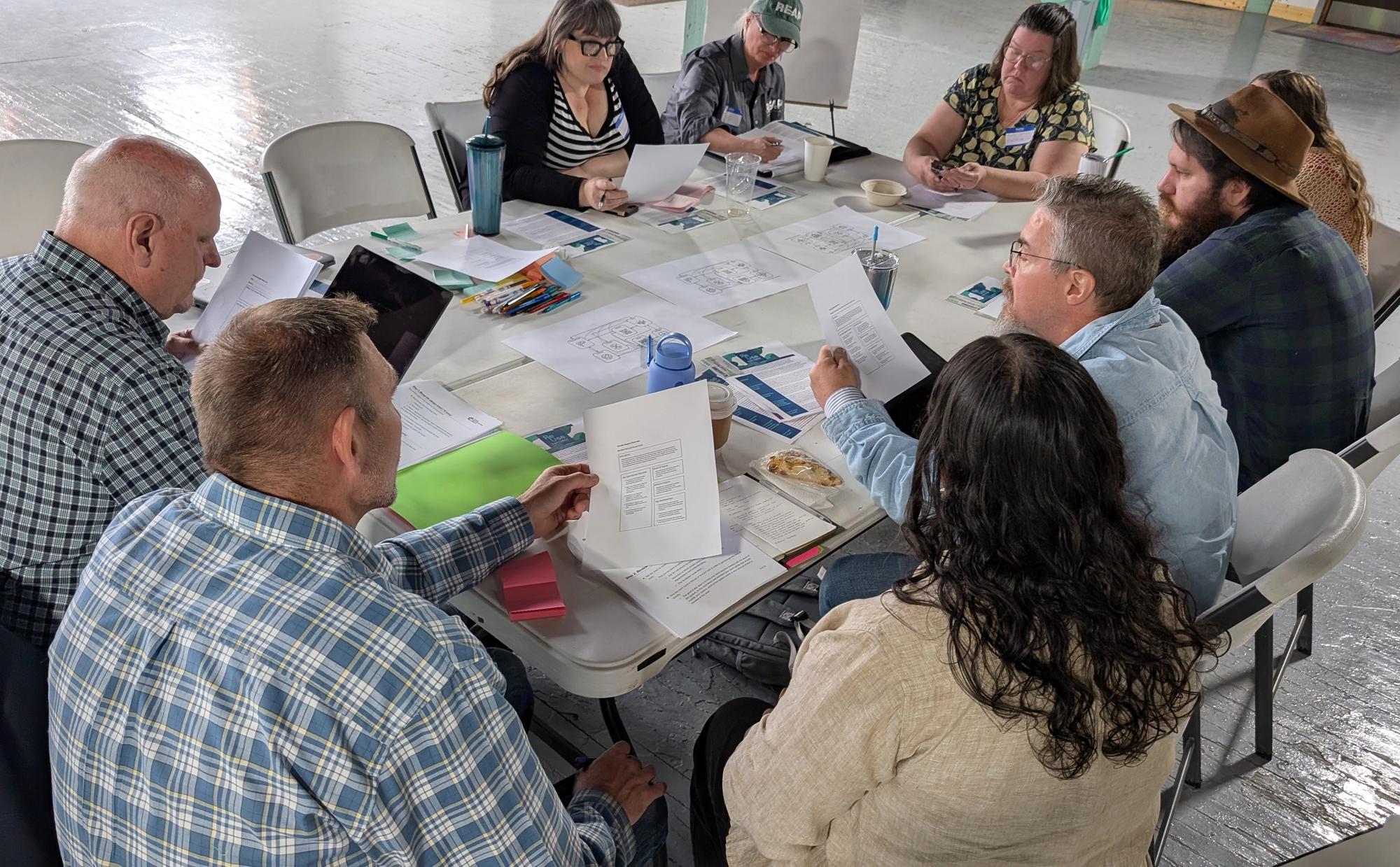
The In-person ReUse Design Jam was open to everyone in the Huntington, WV region, across all parts of the manufacturing ecosystem. During the in-person Jam teams focused on defining new circular systems by linking together some of the services developed during the Virtual Jams. At the start of the day participants were assigned to a team, and provided service snapshots and a challenge:
Define a circular manufacturing system by designing ways to collect, sort, redistribute, manufacture, sell, use, reuse, and repair products and materials. Each step within the system can be completed as services or tasks provided by businesses, individuals, networks, communities or a combination of these.
Each team worked collaboratively, through three activities: Explore, Connect, and Tell the Story. Their output was a brief verbal presentation about their solution. The following is a transcription of those presentations.
Solutions
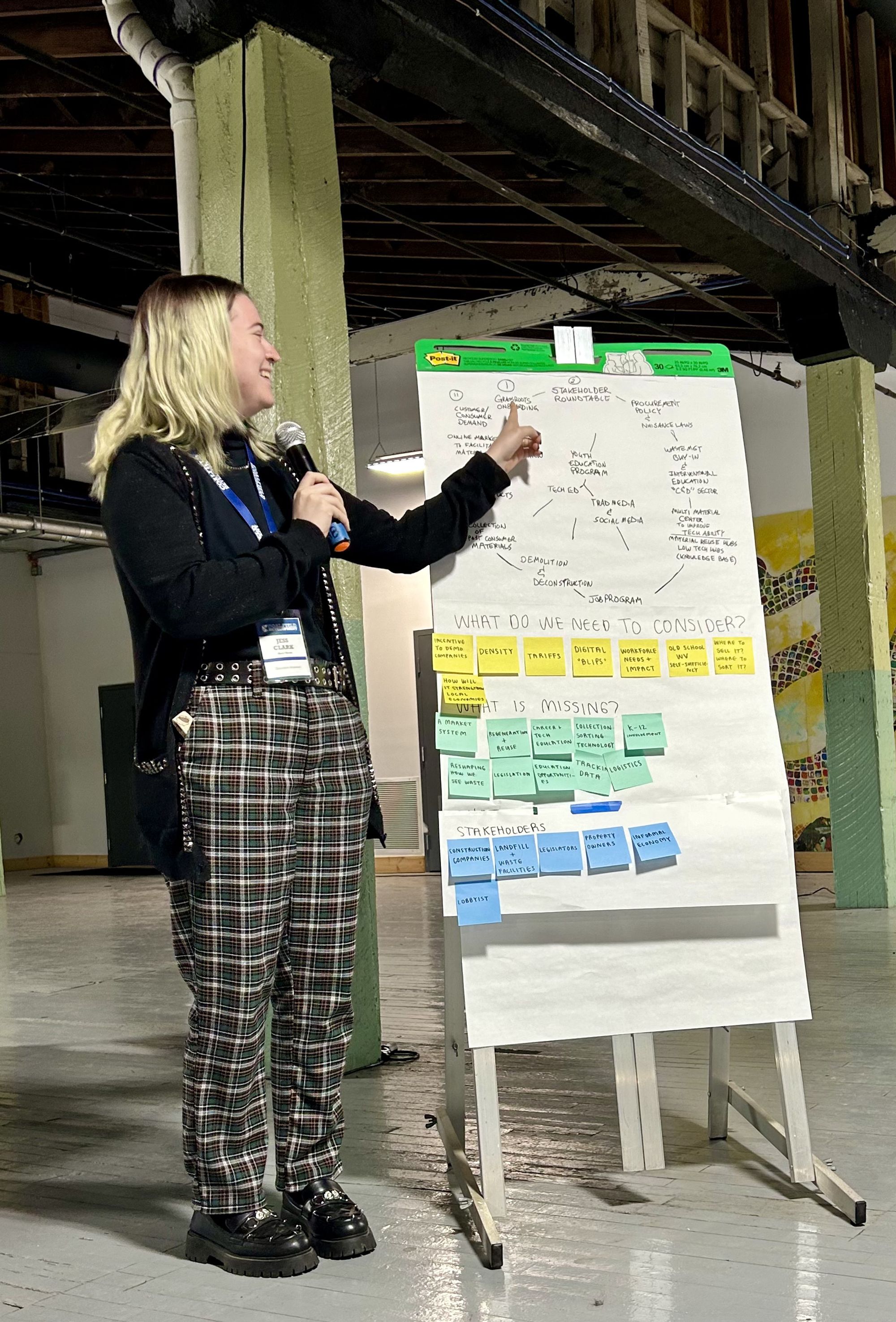
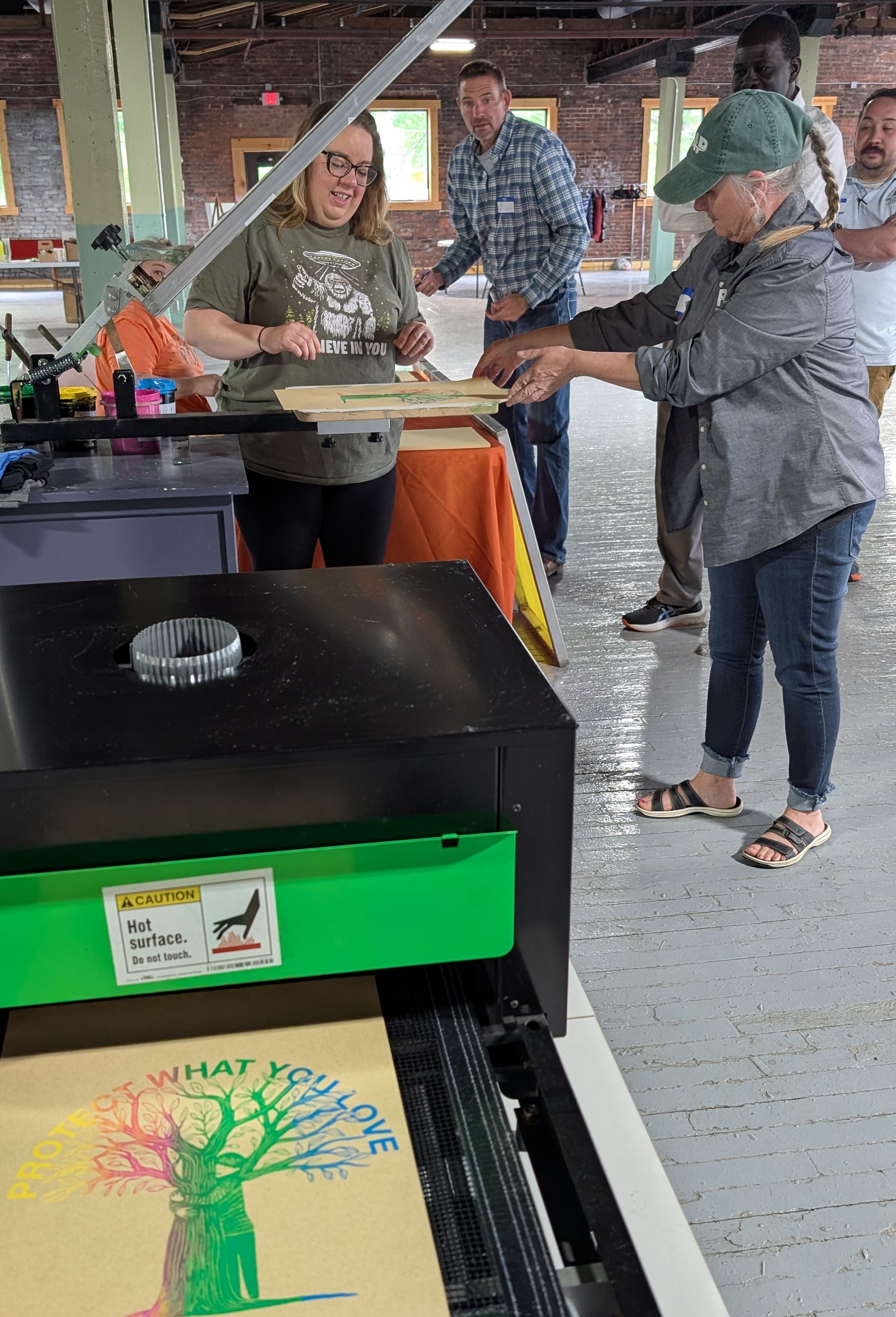
Lessons Learned
Something special stirred in a colorful, mural-wrapped building nestled beside train tracks and tucked into a Huntington, WV neighborhood. Over coffee and locally baked sweet treats, a group of passionate changemakers convened for the ReUse Design Jam in-person event – a full-day, hands-on event focused on rethinking how Appalachian communities manage materials, waste, and opportunity. The Jam took place inside Coalfield Development’s West Edge campus. The space itself, which was once slated to be demolished and turned into a parking lot but has been transformed into a thriving community hub, is a testament to what can happen when people come together to reimagine what’s possible.
The day began with words from Jacob Hannah, CEO of Coalfield Development and a fifth-generation West Virginian. His welcome reminded participants they had gathered not only to imagine new systems but to root those systems in Appalachian values: resilience, care, and creativity.
Bay Epperly, former Associate Director of the Appalachian ReUse Hub and a sixth-generation West Virginian, followed with a bold challenge: to see the region’s systemic neglect not just as a burden but as an opportunity. “Being ten years behind isn’t always a disadvantage,” she said. “It means we can do it differently.” In a state where some communities don’t even have trash pickup, the need to rethink material systems is urgent. Her call to action centered on transforming these gaps into opportunities for creative, clean, and locally-rooted systems.
Andrew Dahlgren, Senior Program Manager at Mechanism, introduced the Design Jam format and introduced Steve Deasy of MSW Consultants. Steve, acoustic guitar in hand, strummed a quiet tune before asking the room what it reminded them of. “Family,” one person replied, and Steve agreed. That warmth guided his talk about the disconnection in globalized systems and the need to return to community-based circular economies built on relationships and care.
Steve’s emotional clarity grounded the day. He reflected, “Walking into this space today– a building brought back to life with recovered materials and recovered people, it felt like the perfect place for this kind of work. I’ll admit, with the news of the AmeriCorps cuts just yesterday, there’s a heaviness here for those impacted, especially those who couldn’t be with us. But then, like sunlight cutting through fog, something shifted. We got to work just like grassroots leaders always do. We leaned in, we listened, and we collaborated. And maybe, just maybe, in light of what’s been lost, this work we’re doing–turning recovered materials into art, products, opportunities, and jobs–does matter.”
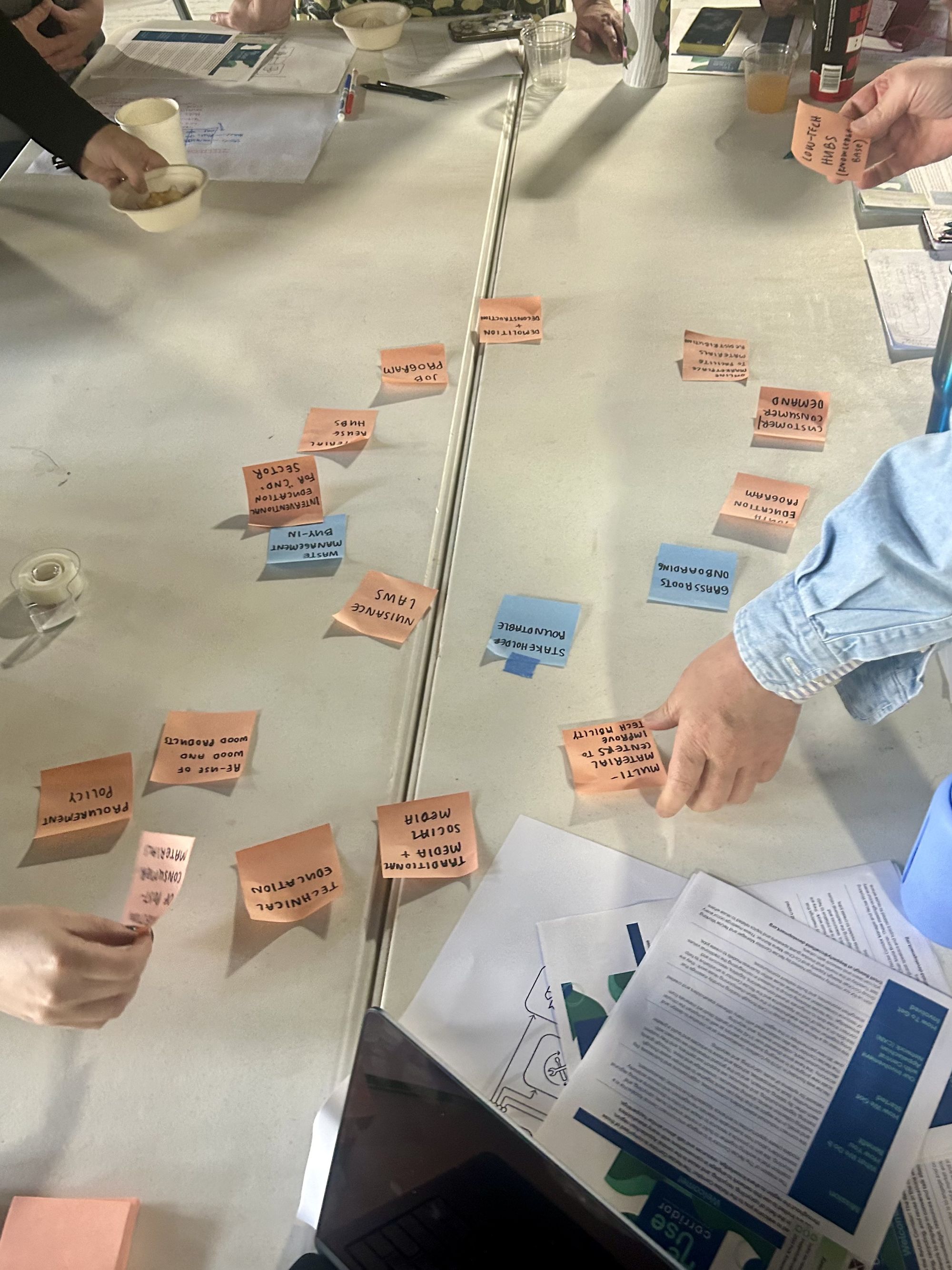
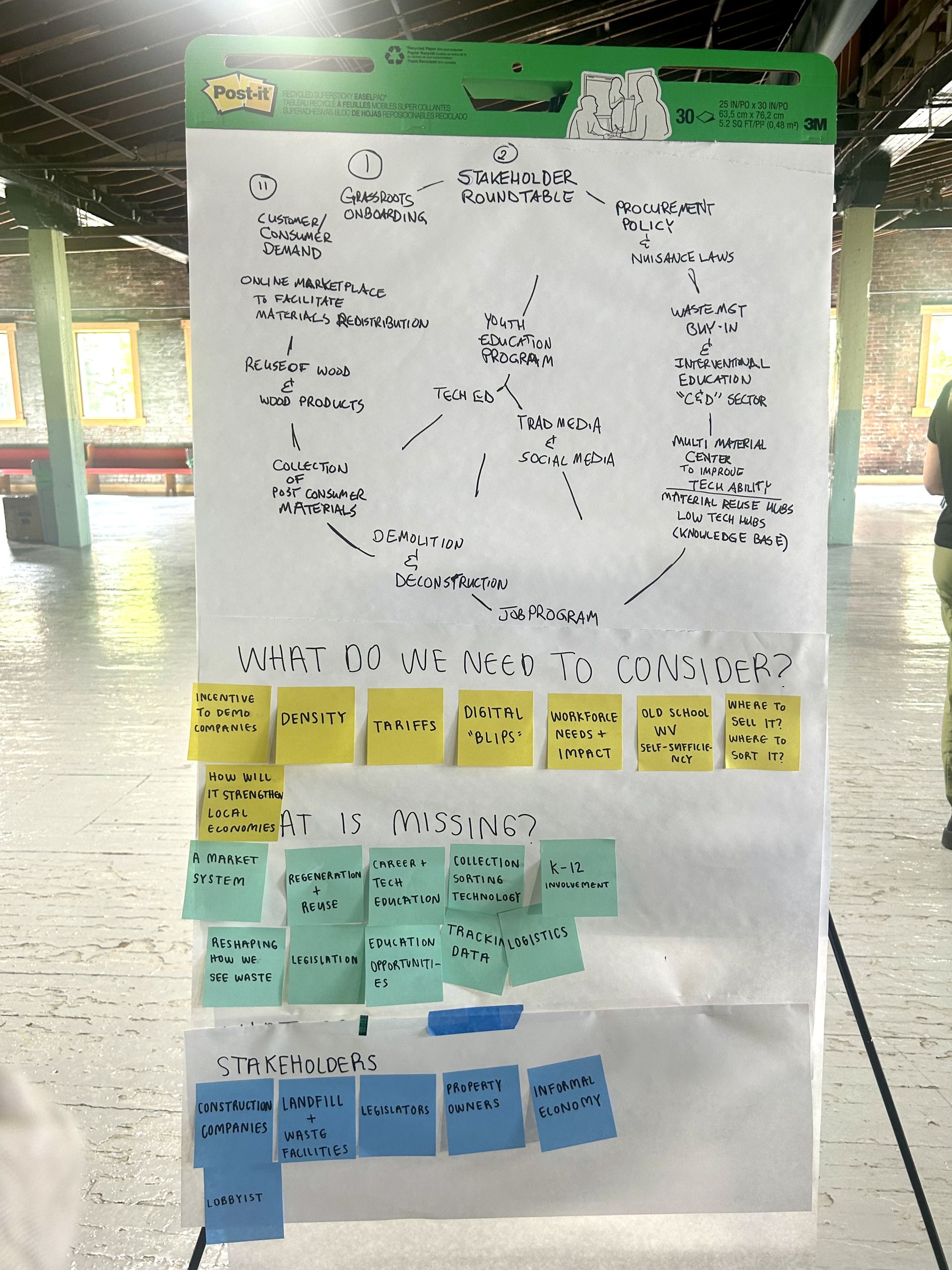
With sticky notes, giant paper pads, and markers scattered across tables, participants split into two groups and dove into ideation. Using prompts such as “What if we created a shared regional hub where manufacturers, recyclers, and designers could exchange reclaimed materials and collaborate via rapid prototyping labs to experiment with new product ideas?”, the teams explored big ideas around circularity, material reuse, and local economic opportunity. This was not just a gathering of individuals, but a community coming together, each person contributing their unique perspective and expertise. While many participants were grounded in circular systems, others brought deep knowledge of community needs and on-the-ground realities.
As the day closed, the impact of the gathering lingered. Laura Adkins, Environmental Specialist with the West Virginia Department of Environmental Protection Rehabilitation Environmental Action Plan shared:
“This Design Jam has really sparked something in me. It’s the first time in a long while that I’ve felt my creative energy flowing like this. Sitting at a table with such a diverse group of people, all eager to share ideas and build something that could truly serve West Virginia and our communities– it’s incredibly inspiring. Honestly, I’m getting chills just talking about it. Events like this should model how we come together around shared goals and the common good—putting communities and the environment first. This is what real progress looks like. I’m so grateful to be part of a grassroots effort pushing for change we can all benefit from.”
In a world that often feels driven by extraction and isolation, the ReUse Design Jam offered something radically different: a vision for a cleaner, more connected, more circular Appalachia and the people ready to build it.
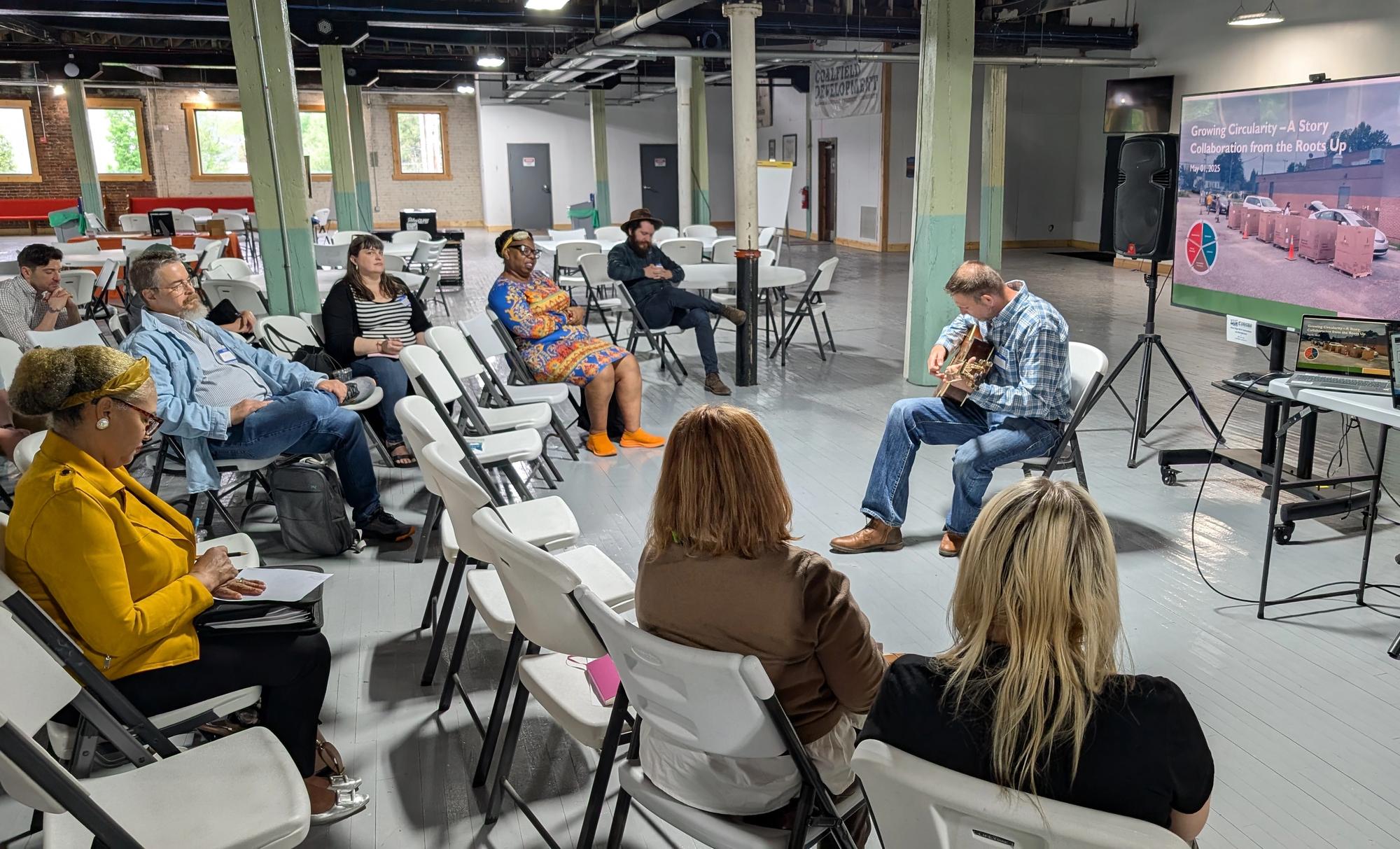
Meet the Team
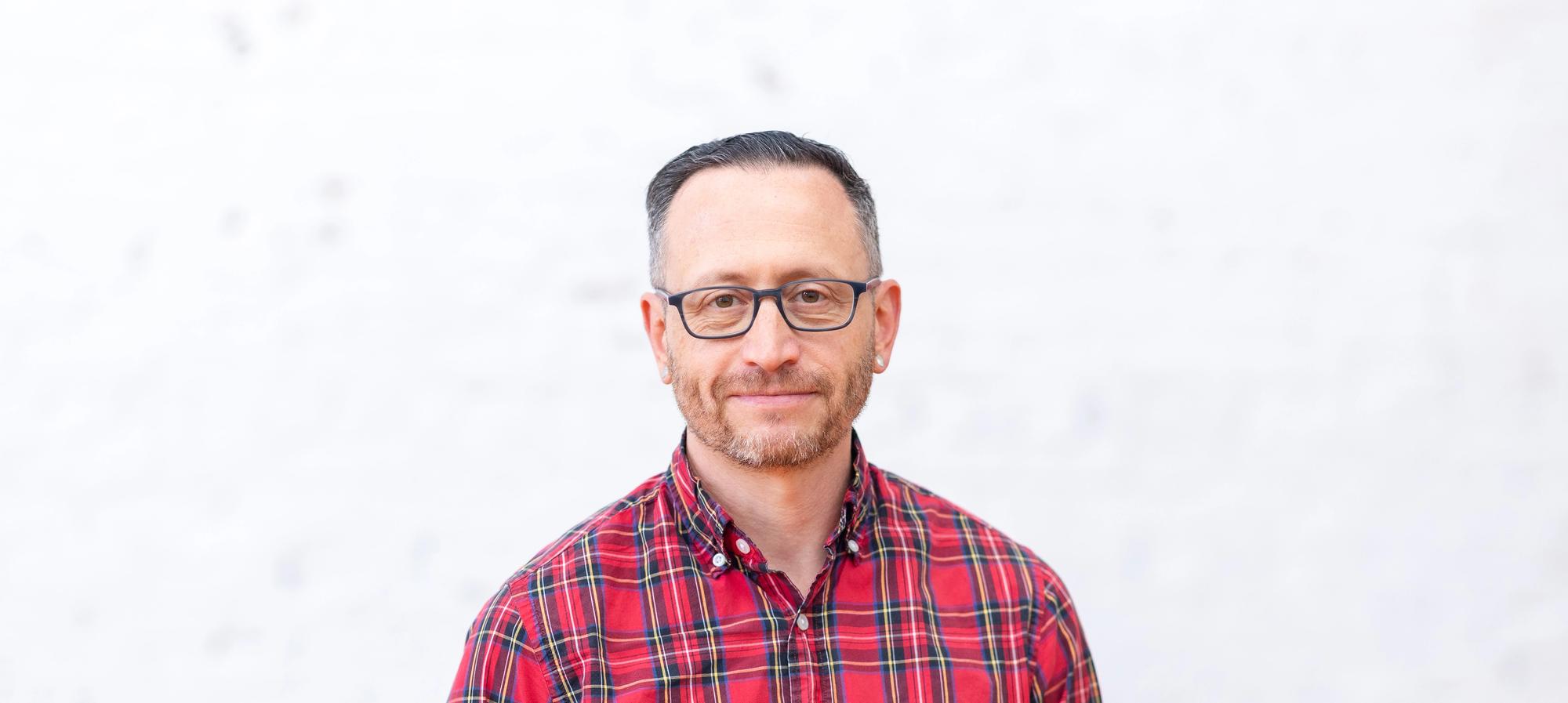
Andrew Dahlgren
Associate Program Director

Patricia Bordallo Dibildox
Program Associate
Want to bring this type of project to your city?
If you would like to learn how to bring a Local Lab to your place, reach out.